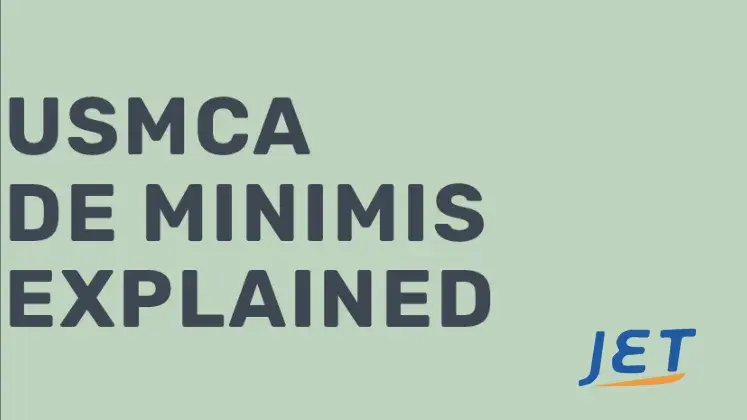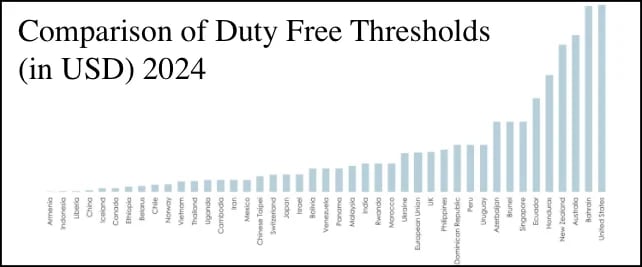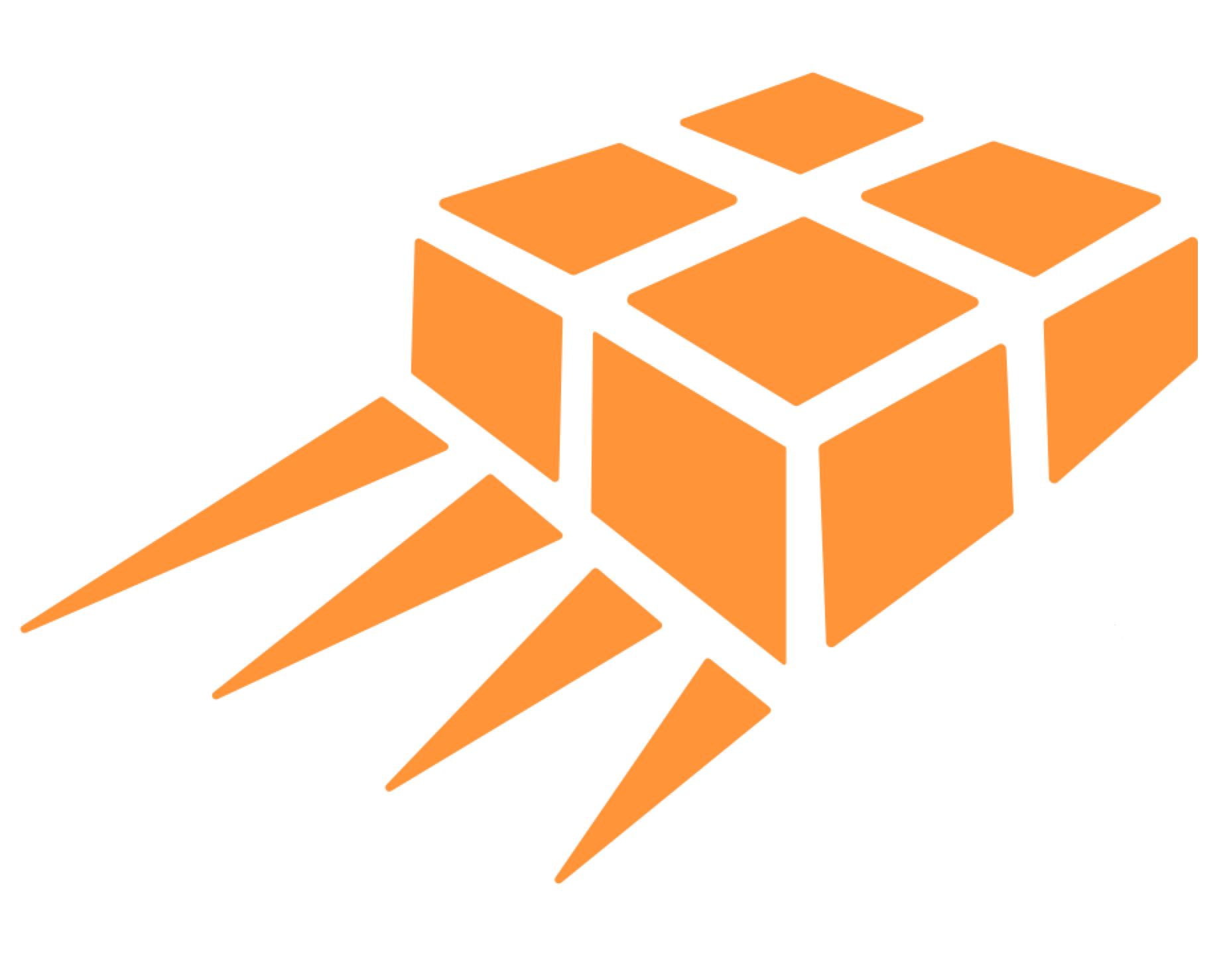
Canada USMCA and De Minimis Explained
A latin term that means “about minimal things” is - ironically - taking on a huge significance for importing to Canada from the USA. The de minimis level -also referred to as the low value threshold - refers to the value below which duty and taxes are not charged.
Currently, most items valued under $800 US can be imported duty free to the USA. Under the new USA Canada Free Trade agreement (USMCA) imports to Canada valued over $40 CAD are subject to duty and taxes. Express shipments valued under $150 CAD can be imported duty free (but are subject to sales tax).
Section 321 to the USA versus LVS system clearance in Canada: Serving express e-commerce imports but with much different low value thresholds.
PDF presentation: Explore US customs entry types
Jet Worldwide helps retailers and businesses utilize de minimis processes for duty free and efficient parcel import processes
Customs de minimis policy in Canada was established as a way to ensure that the government does not spend more than it collects in duties. But it has since evolved into a critical issue for “free trade for e-commerce shipments" around the world. Domestic retailers around the world - including Canada - have rallied political support to protect their home market from what they view as unfair competition.
Canadian Retailers fought hard against raising the de minimis value and - at least according to their public statements - are in happy that with new USMCA de minimis levels. The final USMCA level of $40 / $150 are much lower than what American negotiators has initially demanded.
USA: Most open market for e-commerce parcels. Canada: More open for low cost goods sent via express.
Jet Worldwide shares our logistics expertise (as evidenced by this and our other industry leading blog articles) and global parcel shipping solutions For professional insights, a comparison quote or "out of the box" solution, Who is for higher de minimis? Who is against?
Free trade advocates are naturally for lower import fees. Industry groups that stand to benefit (and lobby for higher de minimis levels) include global parcel carriers (DHL, FedEx, UPS) and internet sellers E-bay, Alibaba, and Amazon.
Polls indicate that the majority of Canadian consumers are in favour of having greater access to cross border e-commerce with lower duty and taxes.
Framing the battle as between American retailers versus Canadian retailers is probably misplaced. Cross border e-commerce is about empowering consumers from to bye direct from the manufacturer - which is often outside of North America.
At Jet Worldwide, we are getting an increasing number of inquiries from Asian retailers and shippers seeking a solution for parcel import to Canada.
Contact our North American import specialists to uncover best practices for high volume import processes.
The main opponents are traditional retailers.
Surprisingly, US retailers were not vocal in their opposition to raising the de minimis value in 2006 (from $200 to $800). But, Canadian retailers have been strong opponents. Their arguments mirror those of Australian retailers.
Partner with Jet Worldwide
Our experts provide personalized support to ensure your shipments are classified correctly, delivered on time, with compliance.
Request a Quote Talk to an ExpertAustralia: A case and point on de minimis value
Australia had, at one time, the world's highest De Minimis value ($1,000 AUD). Most goods valued under $1,000 AUD could be imported duty free and tax free. But, political pressure from domestic retailers forced the government to revisit this policy.
Under new laws effective this year, overseas businesses with an annual turnover of $75,000 AUD will be required to register with the Australian Tax Office (ATO) to collect GST on all goods sold, including purchases under the low value threshold of $1000 AUD.
Canadian merchants would likely also accept a higher duty free level if - as in Australia - the provincial sales tax was collected.
De minimis values across the world. The USA leads the world when it comes to accommodating e-commerce parcel imports. It is important to note that the bigger issue is reducing the regulatory burden - as the cost of processing parcels through customs can be equal to or greater than the duty.
The CUSMA facilitates the movement, release and clearance of good via a simplified framework and standardized customs procedures. Trade facilitations includes fewer clearance formalities for “express shipments” valued under CA$3,000 (to Canada) and US$2,500 (to the USA and Canada).
READ MORE: CERTIFICATE OF ORIGIN EXPLAINED
The origin‑certification process (that is no longer a prescribed form) is to include a set of data on the shipping paperwork (most commonly including on the invoice).
The data elements required at a minimum to claim origin under CUSMA:
- Importer/exporter or producer (indicate which is certifier)
- Name and address of certifier or
- Name and address of exporter or
- Name and address of producer
- Name and address of importer (if known)
- Description and harmonized system (HS) tariff classification of the good
- Specific origin of criteria
- Blanket period (certification is valid up to 12months in the case of multiple shipments of identical goods)
- Authorized signature and date
Check out theCanadian Border Services Agency (CBSA) page that describes the new requirements for more information and an example of a valid CUSMA certification of origin.
Duty Free versus Tax Free
For imports, duty and taxes are often referred to interchangeably. But, for e-commerce imports, the point of contention is more about sales tax than duty. In Europe, for example, the Value Added Tax (VAT), averages over 20%.
It is notable that the de minimis value in the USA applies to duty, not taxes:"articles that may be imported duty-free." Not "tax-free."
READ MORE: CUSTOMS DUTY AND HOW IT IS CALCULATED
In Canada, sales tax represents an important revenue source for provincial and local governments. Canadian retailers complain that they are under strict regulations that require them to collect and pay sales tax (PST, HST) while e-commerce imports are exempt.
Issues, Discussions and Low Value System (LVS) Solutions:
- Canadian retailers complain that a higher “GST/HST Free de minimis” puts them at a competitive disadvantage
- Canadian Ministries of Finance are also worried about the loss of sales tax revenue
- South Korea has a higher level de minimis for goods imported from the USA (as part of the Korean / USA free trade agreement). Perhaps the Canadian de minimis could similarly be applied only to goods from the USA?
- Countries in EU have two de minimis thresholds: Parcel with a value of less than €22 are free of duty and taxes. €150 duty free but VAT is applied. Canada is likely to implement a similar "multiple level de minimis."
Note: having to assign and harmonized code for thousands of different e-commerce parcels - as is the case for US CBP section 321 - would alone provide significant administrative costs.

Canadian consumers have benefited from internationally manufactured goods sourced and sold by domestic retailers. E-commerce provides the further benefit of being able to source products more directly from suppliers. What ever the new rules are, they should be fair and equitable for all parties.
Video: Taking advantage of CUSMA/USMCA
The key provisions of CUSMA USMCA For Shipping Packages to Canada
- Duty free and tax free entry for most US and Mexican origin courier parcels valued under CA$40
- Duty free entry for most parcels shipped courier from the US and Mexico valued under CA$150
- Simplified "Certification of Origin" for shipments valued under CA$3,300
Different duty assessment for goods shipped via USPS and Correos Mexican Post versus Courier (see above):For a shipments shipped via North American postal services duty is assessed starting at CA$20 versus the levels for parcel carriers/ courier mentioned above:
- CA $20 (around US$14.75) and under: duty and tax free
- Above CA $20 duties and taxes apply
At Jet Worldwide, we believe the new Canadian de minimis to be a great opportunity for USA companies selling to Canada using our low cost express shipment delivery from the USA to Canada.
Jetworldwide.com/contact








